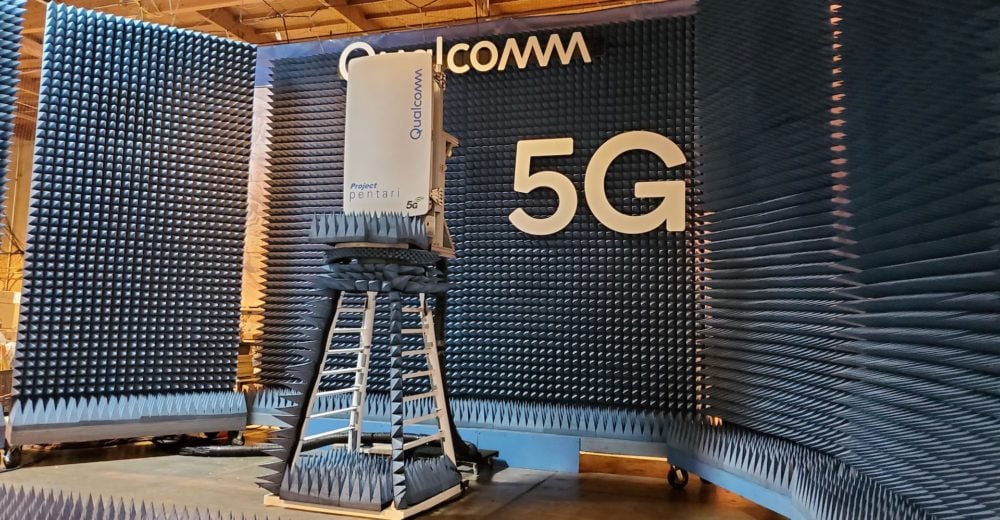Very best safest distance from a 5G cell Structure?

If you've ever been through a city you might have noticed tiny cell towers for 5G on the poles of street lights. They appear like tiny boxes, but they're actually broadcasting wireless signals from cell phone providers to your mobile.
The smaller ones are being replaced by larger specially-designed cell towers. While they're not as noticeable however, they could create issues for users.
A Federal Communications Commission's Radiation Exposure Thresholds
The FCC's Radiation Exposure Thresholds establish the maximum amount of time a person can be exposed to electromagnetic radiation from wireless devices. The limits for exposure are based on research which prove that electromagnetic energy can cause harm to health.
The absorption rate specific (SAR) is a measure of the radiofrequency energy that is taken up by tissues. It's typically 1.6 Watts per kilogram calculated over one Gram of tissue.
However, because 5g transmits at higher frequencies and has the potential to create more energy on the skin and other exposed body areas. This can result in a wide range of potential problems, including an increased the development of skin conditions like dermatitis, skin cancer and cataracts.
Because of the potentially negative effects of 5G radiation, PSU has chosen to establish a general, localized power density limit of 4 mW/cm2 based on the average across 1 centimeter, and never exceeding 30 minutes for the entire 5G spectrum at 3000 GHz. This localized limit is in accordance with the maximum SAR spatial-average of 1.6 W/kg, averaged over one grams of tissues at six GHz.
what is a safe distance from a 5g cell tower
Have you ever used a mobile phone, you're probably aware that a safe location from the tower is around 400 meters. This is due to the transmitting power of cell towers increases drastically the farther your location from the tower.
While it sounds like an ideal idea however, people who live close to towers may actually be more prone to health problems. For instance, a 2014 study in India discovered that people living within 50 meters from cell towers suffered significant more health issues than those living further distance from them.
This study revealed that those who relocated into areas farther away from cell towers experienced their symptoms return to normal within a few days. Another study has demonstrated that exposure to extreme frequencies of radiofrequency electromagnetic fields (EMFs) can cause brain tumors, cancers as well as other health issues.
This is due to the fact that the RF radiation used in wireless communication, can be absorbed by the body's outer layer, the skin. what is a safe distance from a cell tower is crucial to know because the skin acts as a protective barrier against injuries caused by mechanical forces, infections by pathogenic microorganisms, and infiltration of toxic substances. The skin is the largest organ of the human body. It is responsible for keeping the integrity of other organs.
The FCC's Minimum Exposure Thresholds
The FCC's Minimum Exposure Thresholds are based on numerous assumptions that are not supported by scientific research. This includes the false belief that short-term exposures RF radiation are safe due to minimal absorption into body (i.e. the heating of tissues).
This assumption does not take into account the deeper penetration of the ELF components of modulated RF signals, as well as the effects on the body of short bursts generated by RF waves that are pulsed. These assumptions are not in line with the current understanding of biological effects of RF radiation. Therefore they shouldn't be relied upon for health-protection exposure guidelines.
Furthermore to what is a safe distance from a cell tower , ICNIRP and FCC limit their maximum exposure limits to local peak SARs, based on the maximum speed of spatial absorption (psSAR) which is not a sufficient dosimetric tool to assess the amount of radiation exposure. Particularly, psSAR is inaccurate for frequencies that exceed 6 GHz. Furthermore, psSAR has not been evaluated for RF radiation with co-exposure to other environmental agents , such as sunlight. Interactions of RF radiation with other environmental agents may result in antagonistic or synergistic impacts. This would result in the risk of having adverse health adverse effects. For example, exposure to RF radiation and sunlight could raise the chance of developing skin cancer, and may also exacerbate other skin diseases such as acne.

